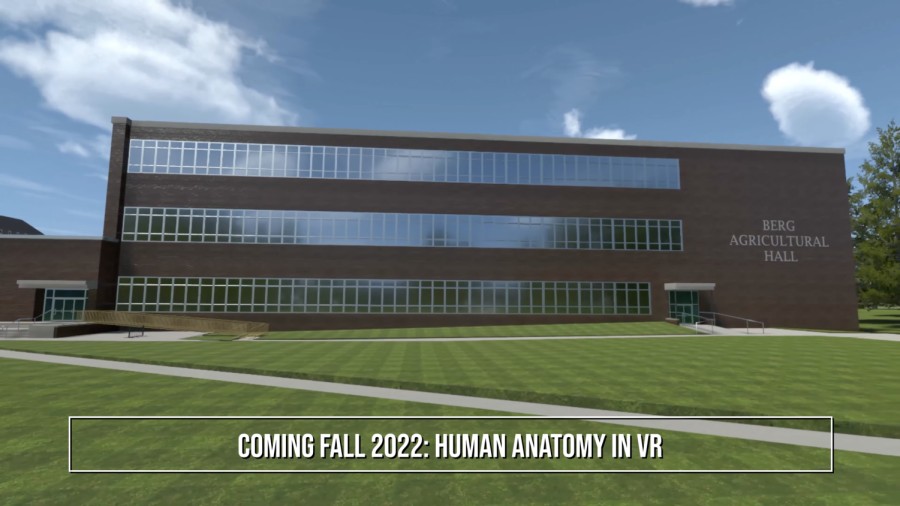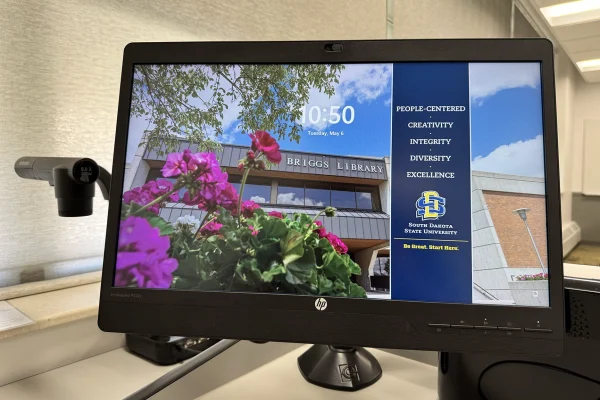SDSU readies for ‘metaversity’ through virtual classes, campus
October 4, 2022
SDSU’s metaverse classrooms are online this semester as professors explore a new frontier of education: virtual reality.
At the cutting edge of classroom innovation is Sara Madsen, a senior lecturer in the department of chemistry and biochemistry. This semester, she’s trying something few instructors have had the opportunity to do: teach organic chemistry in the virtual-reality metaverse.
“My first big challenge was to get enough training in VR to be anywhere near creative enough to build the curriculum,” Madsen said. “I spent probably from March of this year [until now] trying to just get in the headset and learn what’s available to me.”
In the metaverse class, students find themselves in a multitude of settings. They may be in a classroom, lab space, the campus green or even on another planet.
In the first session, Madsen brought her students to a “creator room,” or essentially an infinite space where students aren’t constrained by the size of the classroom or lab.
“Space is an issue because students are taking molecules and objects that seem really small at first, but students can make them as big as they want,” Madsen said. “They can make them 100 times their body size, so we go out to these other spaces that give us the space to do that.”
The technology hasn’t been used widely in educational spaces yet, something Greg Heiberger, associate dean for student success in the department of biology and microbiology, hopes SDSU will change.
“It’s going to depend on whether we’re involved,” Heiberger said. “I mean we, as educators. If we’re not involved, it will likely become a consumer product. It’s going to be about clicks, putting things in a basket, checking out and making money, and that’s not the angle we’re taking. It’s how we can add value to your learning, to you understanding concepts, to you having hands-on experiences.”
This semester, SDSU has allocated an anatomy course and organic chemistry course 50 headsets (headsets for 24 students and one instructor for each course) and had them shipped to students. Another six headsets went to the Washington Pavillion, 16 at the American Indian Student Center and 10 in a mobile lab that can be taken to recruitment events.
The university plans to build a “computer lab” space that will house another 24 headsets, Heiberger said.
Earlier this year, SDSU was announced as one of the initial campuses to be built in the metaverse and offer courses in VR. The metaverse campuses are built by VictoryXR, an Iowa-based company founded in 2016 with the mission of finding more interesting ways to educate students.
But convincing people the value of having a virtual reality in education isn’t an easy task.
“Just people comprehending and understanding the concept of what a metaversity is is something that’s literally never been done in human history, so people first have to get their head around that,” said Steve Grubbs, VictoryXR’s CEO.
Southern Oregon Community College, another school partnered with VictoryXR, is exploring academia in the metaverse. There, Vice President of Instruction Ali Mageehon is using the metaverse to supplement in-person classes. This semester, she’s instructing a speech class.
“This is all new territory for us,” Mageehon said. “This week, we’re going to do impromptu speeches within that environment. Then we might do some other formal speeches with students as their avatars, speaking in our lecture hall here on campus, which is not something they would normally do here on campus.”
As with any new technology, there are challenges with implementation. Students may forget to charge their VR headsets, may have unreliable internet or suffer from fatigue after prolonged sessions. Madsen is taking note of the challenges and adapting the course as they go.
“My whole objective here by the end of the year is to show that the immersive environment of VR is going to help students have better retention of the material that they’re learning,” Madsen said.
Heiberger sees the VR classrooms and labs as an imperative step for SDSU’s commitment to providing a high-quality education and staying competitive with leading schools across the nation.
“It signals a core component of who we are,” Heiberger said. “It signals the value of South Dakota State University is that we care about innovation, we care about the cutting edge and we care about education.”
For Grubbs, the path forward for education is clear: “Every college and university in the world will have, at one level or another, a metaversity lab or campus.”























